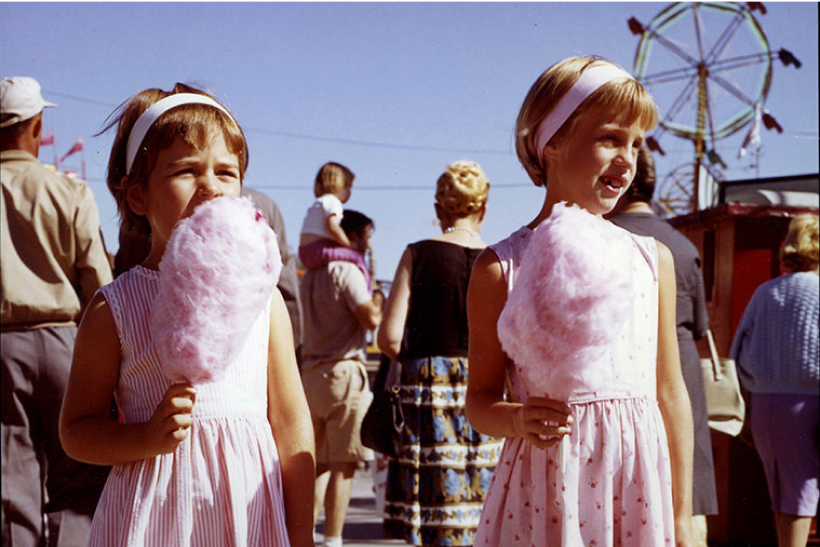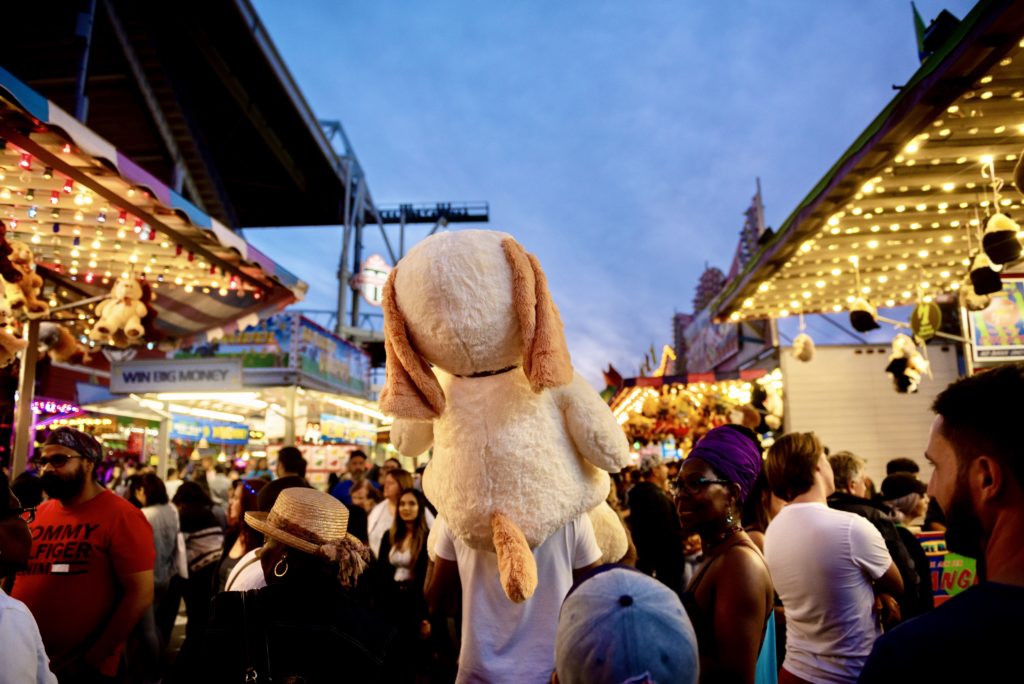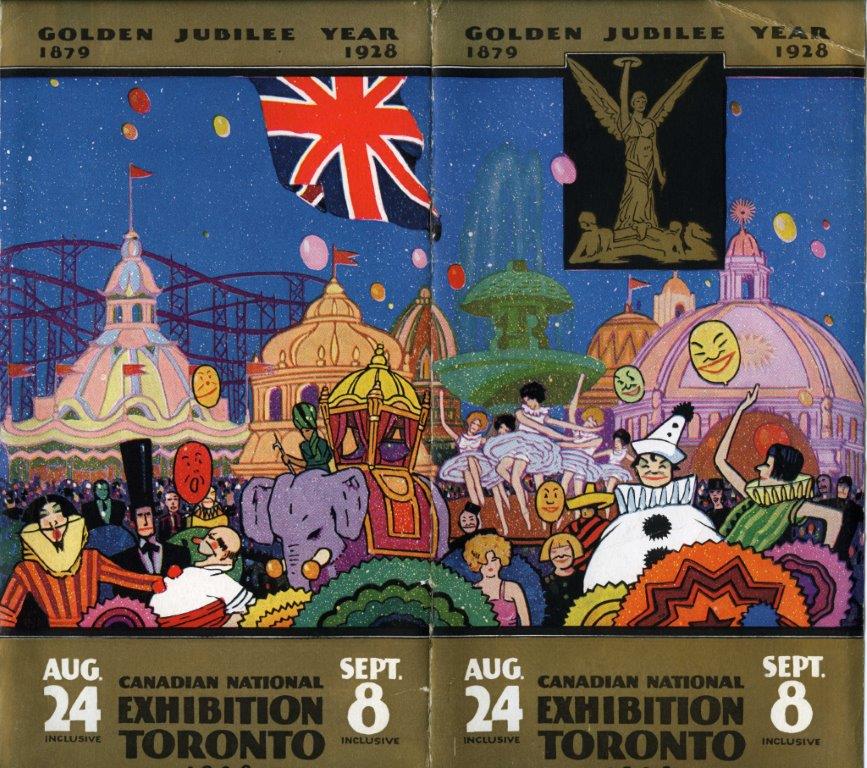About the CNE Heritage

Please join us on a “time-travelling” journey through the rich and colourful 142-year-old history of the Canadian National Exhibition Association (CNEA). This website is devoted to our heritage. It is a “photo-log“ of our past: one that features photographs, posters, programme covers, prize list covers, tickets, advertising and newspaper clippings from the CNE over the decades. Each piece reflects the style, the focus, and often the issues, of the time.
The CNE Heritage Site is, and always will be, a “work in progress”. As more and more of our archival images are digitalized, this site will change, evolve, and be embellished over time.
A Snapshot of Canadian History
As a visual travelogue of the history of Canada’s largest fair, the CNE Heritage Site serves as a photographic and psychographic survey of Canadian history as it played out every year since the CNE began in 1879. This year proves to be no exception.
The history of the Canadian National Exhibition is a poignant reflection of the history of this country. Year over year, the CNE images on this website capture Canadian life as it was experienced in a single season in late summer, on a single site situated on the northern shores of Lake Ontario in Toronto, Canada.
It features CNE visitors interacting with agriculture, entertainers, exhibits, fashion, food, midway rides, shows, and the new technology of the day. It also details visits by members of the Royal Family, Canadian Prime Ministers, Ontario Premiers and various other dignitaries, over a span of more than a dozen decades.
Even when the CNE was closed during the Second War, the CNE grounds played an important role as a training and recruitment centre for our troops.
Not to be stopped by the war, Patty Conklin of Conklin Shows, the CNE’s midway provider, took the Carnival to Toronto’s Riverdale Park under the guise of the Fair for Britain in 1942 and 1943. The fun of the fair continued during the early days of the second war.
As we face the challenges presented by the coronavirus: COVID-19 in 2020 and 2021, it is important to remember that the CNE has faced, and survived, many such obstacles in the past. In addition to two World Wars, these challenges have included the Spanish Influenza pandemic of 1918/19 , the Great Depression, the polio epidemics of 1937 and 1951, SARS (Severe Acute Respiratory Syndrome) in 2003, the electrical blackout on the Eastern Seaboard that same year, which closed the CNE for our first four days in August 2003, and the H1N1 (the Swine Flu) pandemic in 2009.
The Tradition Continues

It is said that “our past informs our future.” Although the CNE has changed enormously over the years, it remains a vibrant and popular Canadian tradition that generates major economic impact for both the Greater Toronto Area and the Province of Ontario.
Each year, new visitors attend, and new memories are made. This year, these CNE experiences will take place “virtually”, online at TheEx.com.
Through this Heritage Site, we explore the experiences and memories of the generations of individuals who walked before us on these historic grounds.
We welcome you aboard this fascinating voyage!
CNE Archives

The CNE has always been proud of its history and the wealth of memories that have been created here since its incorporation in 1879.
The CNEA Archives, established in 1964, works hard to acquire and preserve the historical memories of the organization and make them available to the public through their online database. The collection is mainly comprised of photographs (negatives/prints/slides) spanning almost the entire history of the CNE. Smaller print material, ephemera, artifacts, and sound and moving images collections help round out the archival collection. At this time the CNEA Archives are closed to the public. Research and reference requests can be directed to Shayda Spakowski.
Personal/Educational Use
Public Domain images contained in the CNEA Archives’ physical and digital repository may be reproduced in print or electronic form for personal use, educational use, and research. Please ensure any Public Domain image used includes the following credit line: Courtesy of Canadian National Exhibition Association Archives.
Those copies (photographic, moving images, photocopies, etc.) which are not in the Public Domain are made for research and private study purposes.
Information about any request for copies made for research and private study may be made available to the copyright owner or his/her authorized representative.
Commercial/Marketing Use
Use of CNEA Archival holdings for Commercial or Marketing endeavors must receive permission from the CNEA Archives prior to publication regardless if the item is in the Public Domain or not. There is also an associated fee for their use, for more details please contact Shayda Spakowski.
User Responsibility
Any use of reproductions for a purpose other than research or private study may require the authorization of the copyright owner of the work in question.
Responsibility regarding questions of copyright that may arise in the use of reproduction is assumed by the recipient. Upon request, the staff of the Archives will endeavor to provide recipients with the copyright status of the material in its holdings as well as the name of the person, company or organization holding the copyright, when this information is known.
Land Acknowledgement
The Canadian National Exhibition takes place at Toronto’s Exhibition Place, which is located on land that is part of the Treaty 13 Lands and the territory of the Mississaugas of the Credit, and the traditional territory of the Haudenosaunee, and the Huron-Wendat.
Toronto is home to many diverse First Nations, Inuit and Métis peoples.
